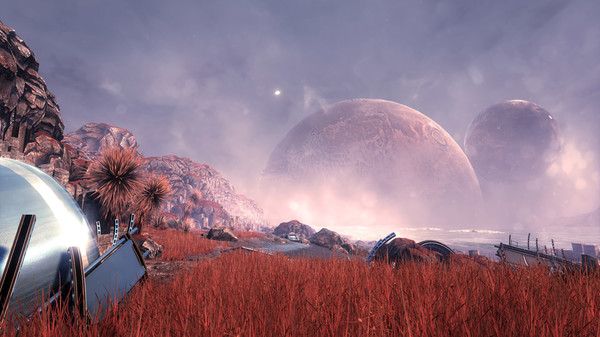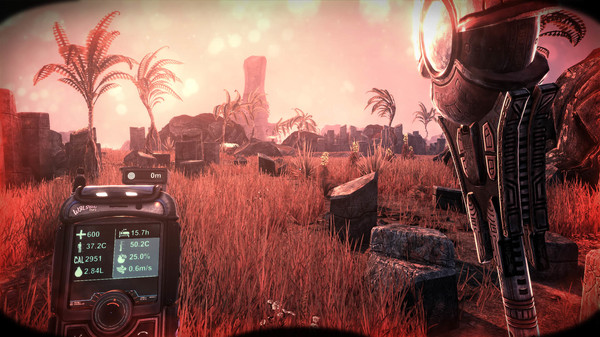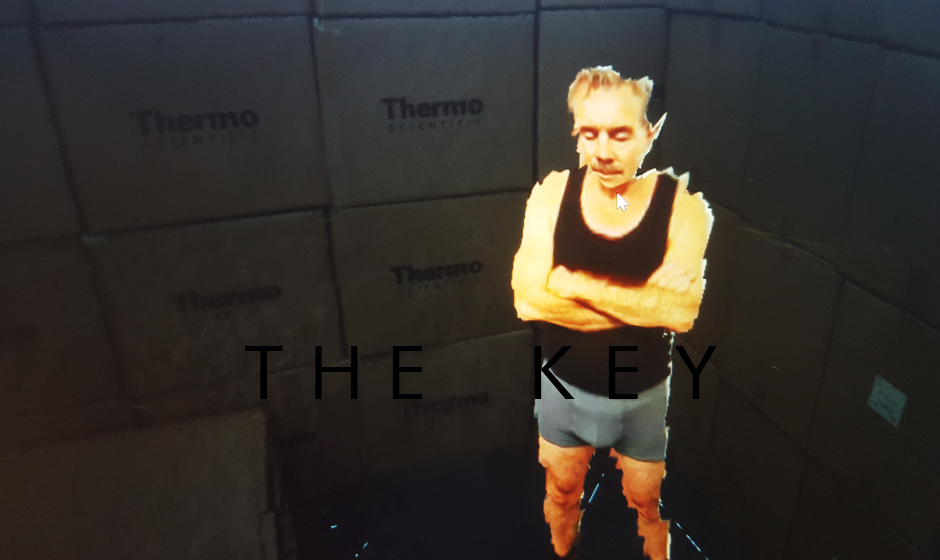The Solus Project – RoomScale VR Review
The Solus Project is a beautifully designed science fiction story from the same publisher that released the Aztec adventure title The Ball almost a decade ago. In fact it is marketed as “The Spiritual Successor” to The Ball. The premise is a Robinson Crusoe like affair wherein your ship crashlands on a remote, lushly verdant planet, with little hope of rescue and frigid nightly temperatures against which you must protect yourself.

I am a sucker for survival simulators – something about the mechanic of exploration, discovery, mixing and matching items and producing new tools with which to power up, forms the almost ideal combination for long-play satisfaction. And The Solus Project, as a game, does this well. So certainly I was excited – to put it lightly – to try this out on my HTC Vive: a rich graphical, near-AAA looking title on a remote planet where I could experience – first hand – the challenge of staying alive against all odds.
Loco Motion
The first thing that is clearly VR-based is the movement in the roomscale port: rather than use WASD to float around, here you use the now-established VR method of pointing at the ground and clicking your D-Pad to define a destination circle to which you then teleport. There is also the option to glide along the ground, and fortunately it doesn’t accelerate or decelerate or bounce; it merely gets you moving at a constant speed so as to allay motion sickness.
The 360 view from within the HMD is nice, with not lag or jutter and the detailed sound design helps to enliven the sense of immersion. The sound designer – Jonas Kjellberg – also happens to be the composer, whose lively orchestral MIDI score lends a mysterious and hypnotic undertone and, appropriately enough is peppered with sound effects and textures that roil in its currents. When things get foreboding, huge fat modular synth leads combine with mechanical cacophony to induce dread and urgency.
This is where most good things end for VR enthusiasts, unfortunately.
The inventory and combining/crafting system is a fidgety mess. There is an attempt at a UI but it is inconsistent and unintuitive. I could never quite master the dropping, versus selecting, let along combining actions. I would so much rather reach behind my shoulder to open my backpack, point and select what I want, pick it up and drop it onto a target, than this obtuse, after-the-fact system. You also toggle so that one of your hands turns into a tricorder that offers bio and environmental feedback. I found this extra step cumbersome and would prefer to see this as an augmented reality overlay in an in-world HUD.

Interacting with things in the environment is equally tedious. I was supposed to find things, sometimes in a certain order, and never quite got the hang of it. Right off the bat, I am supposed to get hints from pieces of paper strewn along the path I am travelling. Graphically, they were a little too backgroundy, but also, it took me some backtracking to figure out how to actually pick them up and look at them.
Now, I do appreciate that the text is handled within the world, rather than as an interface component, it just was not the most helpful system, especially given that these strewn pages contain important information about how to do things in this brave new world.
I found that the combination of time challenges (having to find shelter, heat or food before nightfall), having to manage the fidgety inventory system wherein the illogical crafting system works against you and the complexity of the craftables in relationship to your chances for survival prevent this, in its current stage of development, from providing a viable, long-term VR experience.
The Hitchhiker’s Guide To Desolate Planets
The company did provide an ad-hoc user guide for HTC, but much of it has already become obsolete with no new updates as of this writing. Furthermore, as user maxsmoke points out on that very guide, “the game appears to be setup for the Oculus Rift.” All told, I felt I could anything available to be done in VR, sitting down. There is nothing that takes advantage of the 6 pound IR-sensing thing strapped to my head, let alone the two lighthouses filling up the corners of my meatverse room.

There is talk of a sequel to The Solus Project, and I hope that the dev teams at Hourences and Grip Games work from the ground up to bring a refined VR experience. As it is now, TSP may be a great game for standard PCs, but the posthumous Roomscale port leaves a lot to be desired.
The Solus Project is a magical release for PC lovers of survival games, let alone in space, but those looking for a richly detailed, transportive roomscale VR experience should look elsewhere.
Title: The Solus Project
Release Date: June 7th, 2016
Developer: Hourences, Grip Games
Genre: Adventure, Simulation

